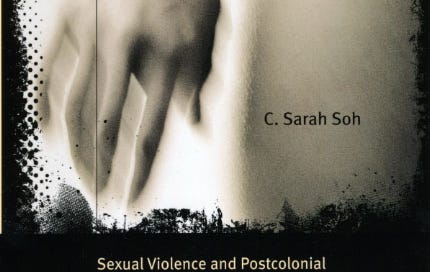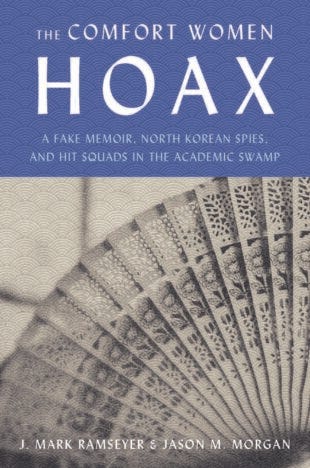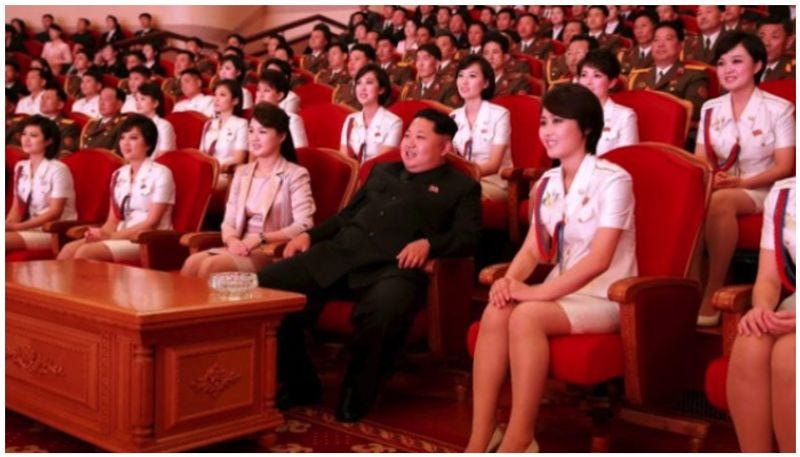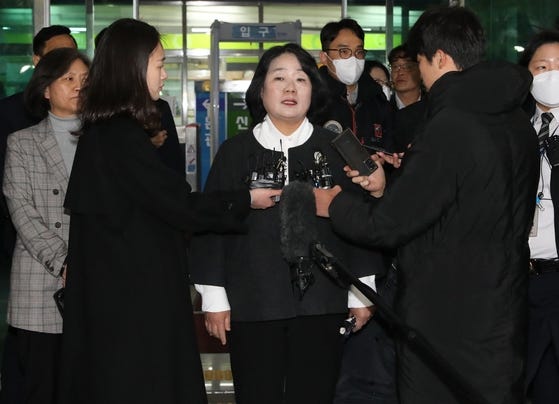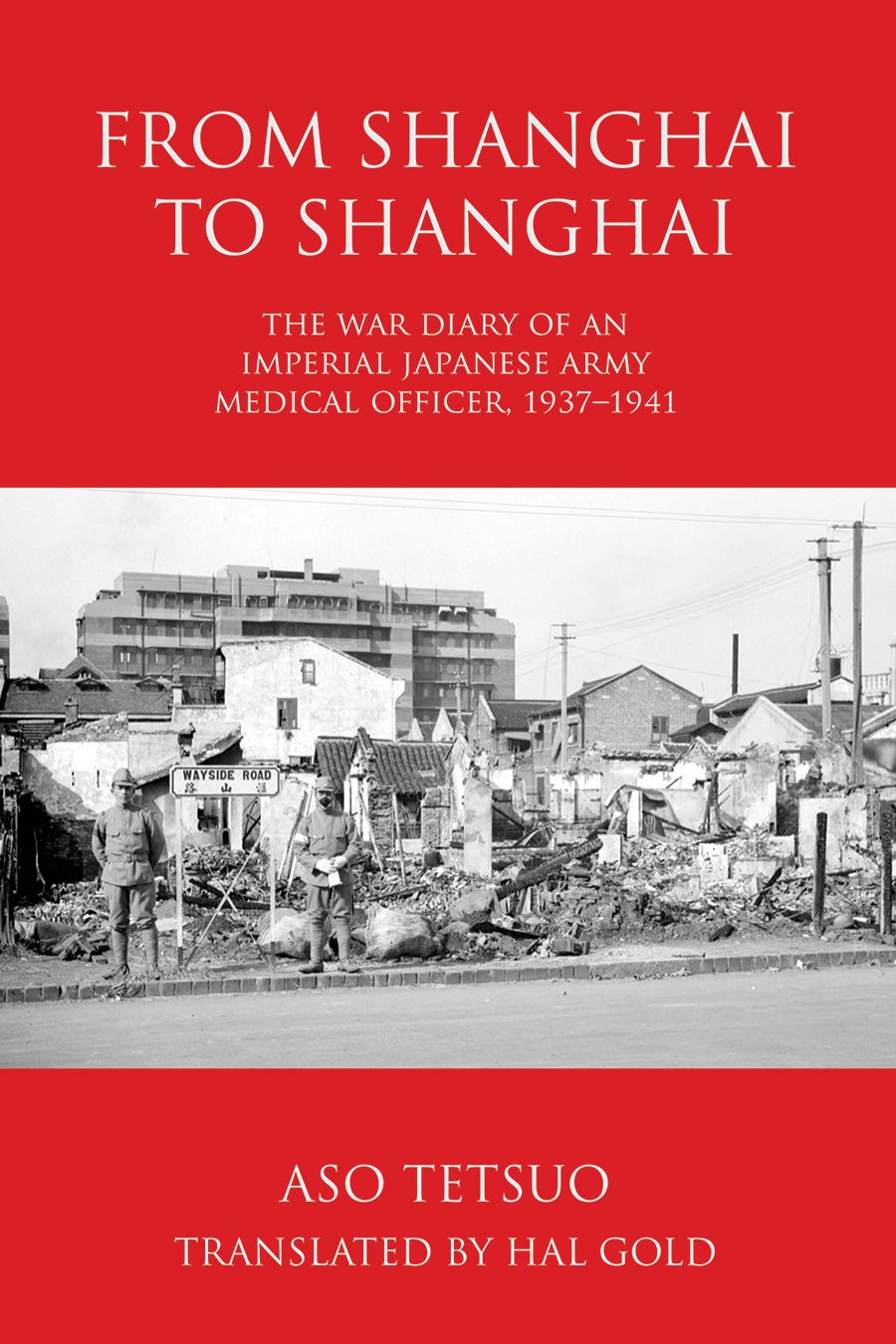Following the English literature from rabbit hole to rabbit hole
A review of books on the Korean comfort women.
Shanghai to Shanghai: The War Diary of an Imperial Japanese Army Medical Officer, 1937-1941
Tetsuo Aso
Translated by Hal Gold
Eastbridge Books, 2017
Originally published as Shanhai yori Shanhai e, Sekifusha, 1993
The Comfort Women: Sexual Violence and Postcolonial Memory in Korea and Japan.
C. Sarah Soh
University of Chicago Press, 2008
The Comfort Woman Hoax: A Fake Memoir, North Korean Spies, and Hit Squads in the Academic Swamp
J. Mark Ramseyer and Jason M. Morgan
Encounter Books, 2023
A frequently used reference used to undermine the Korean version of history, that innocent Korean girls were kidnapped during World War II by the Japanese army and forced into sexual slavery, is Professor Chunghee Sarah Soh’s “The Comfort Women”. The comfort women redress movement in South Korea, spearheaded by the Korean Council (short for “Korean Council for Justice and Remembrance”) seeks nothing less than permanent humiliation of Japan. Indeed, former President Park Geun-hye, impeached towards the end of her term and convicted and jailed for corruption, declared on March 1, 2015: “The historic dynamic of one party being a perpetrator and the other party a victim will remain unchanged even after a thousand years have passed.”
The oral testimonies of the Korean comfort women are key elements that sustain the Korean comfort women narrative. Soh detailed in her book how the testimonies of wartime Korean comfort women changed depending on the audience. A Korean comfort women activist, Ko Hye-jong, freely admitted to Soh that the “interviews” are “not monologues but dialogues” and that the “stories” change “depending on the identities of the listeners” (p. 99, Soh). Thus, in 1993, one reads of a former comfort woman, Yi Yong-su (or “Lee Yong-soo”), who at a young age (she said she was either “14” or “16”) “simply left home” at dawn with her friend and joined a comfort women recruiter (p. 100, Soh). Then, in 2007, Yi told the US House of Representatives that “in the middle of the night” a Japanese “man” (or “soldier”) covered her mouth and then she was “taken away”. A week later, in front of Councilors in the Japanese Diet, she stated that Japanese soldiers “dragged her out [of her home] by the neck.” (p. 101, Soh) While a comfort woman, Yi stated that she was not beaten by Japanese soldiers (“I was never beaten by soldiers”) but she did say she was “frequently beaten by the proprietor.” However, a week later, Soh tells us that Yi stated at the Foreign Correspondents’ Club of Japan that she was tortured by Japanese soldiers. (p. 101, Soh)
Keeping track of the assorted tales of Japanese brutality and Korean victimization emanating from one comfort woman is hard: there are a few dozen “certified” Korean comfort women who have engaged in “dialogue”. Professors J. Mark Ramseyer and Jason M. Morgan have distilled the ever-evolving “dialogues”, “depending on the identities of the listeners”, in their book, The Comfort Women Hoax (Encounter Books, 2024). Ramseyer and Morgan have referred to Soh to ultimately point out that destitute elderly Korean women have been treated as pawns in a crass game of xenophobic and nationalist Korean politics—and more.
The main value of Ramseyer’s and Morgan’s (RM) book is exposing the North Korean hand behind the Korean comfort woman controversy. A vast literature on the Korean comfort women issue exists, from the scholarly to the barely readable, since the emergence of the Korean comfort women issue which has repeatedly pointed out underlying flaws in facts and logic. The same pieces of evidence have been used over and over to demonstrate that the Korean narrative is untenable. For example, frequently cited is the October 1, 1944 US Office of War Information Japanese Prisoner of War Interrogation Report No. 49, written by T/3 Alex Yorichi, which clearly stated that Korean comfort girls in US custody were paid prostitutes who either knew what they were signing up for or fooled into signing up (the “majority of the girls were ignorant and uneducated”). Furthermore, the report points out that the girls were not “slaves”.
A key tenant of the comfort women narrative is that the women were forced at gunpoint into sexual slavery. However, the Japanese prisoner interrogation report No. 49 makes repeated references to the girls’ “contract”. Recently, Ramseyer attracted the wrath of Korean comfort women activists, within and outside of Korea, when he pointed out something that has been known since the beginning of the comfort women issue, that the comfort women were employed under a contract—they were not dragged off the streets by Japanese soldiers. For those unaware of the timeline of the conflict between activists and those who have tried to set the historical record straight, it is detailed in Ramseyer’s and Morgan’s book.
For those who have been on the sidelines and find the activists’ predictably shrill wailing in response to concrete evidence extremely tedious, one can skip a few chapters. As things stand today, to this reviewer, there will be no settlement or even an agreement of basic facts, since, as activist supporter Park Geun-hye stated earlier, “The historic dynamic … will remain unchanged even after a thousand years have passed.”
Few writers have bothered explaining why the Korean comfort women activists persist, despite obviously weak structural support of their narrative. A few have previously noted the North Korean Kim Dynasty’s willingness to exploit any issue that serves keep Japan, South Korea and the US off-balance, at any cost, even at the cost of a few frail, elderly women. One would have a hard time believing that the Kim Dynasty backs the Korean comfort women issue for purely humanitarian reasons.
The path between the People’s Democratic Republic of Korea and women in their 90s is littered with shell games played by traitors and criminals who have wrapped themselves in Korean patriotism. For example, the former head of the Korean Council, which jealously guards the Korean comfort women from frank questioning and claims to speak on their behalf, Youn (or “Yoon”) Mee-hyang, was convicted in 2023 of embezzling donations made to the Korean Council. Yoon’s husband, Kim Sam-suk (or “Sam-seok”), and his sister, Kim Eun-ju, were convicted of spying for North Korea in 1994. The conviction was later overturned on appeal but both were nonetheless convicted of violating the National Security Act. Others affiliated with the Korean Council have been charged as North Korean agents. (e.g., “Chapter 6: The Korean Council”, RM)
As a side note, senior judge Lee Dae-yeon was found dead about two weeks before the start of Yoon Mee-hyang’s first trial in 2020. His body was found in a restroom near a restaurant where he was having dinner with “a group of fellow judges.” Media claimed that he was “overworked”.
Ramseyer’s and Morgan’s book went to press in early 2023. Following Yoon’s adventures thereafter, on September 1, 2023, she was in Japan as a member of the South Korean National Assembly to commemorate Korean victims of the “Kanto Massacre” that followed the 1923 Great Kanto Earthquake. The event was organized by the General Association of Korean Residents in Japan, the Chongryon (called the Chosen Soren in Japan), a front group of the ruling North Korean Worker’s Party. The South Korean government calls the Chongryon an “anti-state” organization and any South Korean contacting such groups must first report to the Unification Ministry or face a fine. For Yoon, she could lose her seat in the National Assembly as well. Yoon has denied any wrongdoing and she has yet to be charged.
Perceptive South Koreans, such as Hwang Uiwon, have seen through the Korean Council’s shameless use (abuse?) of elderly women as a means to further the Kim Dynasty’s geopolitical goal: to keep Japan and South Korea locked in squabbling and deflect attention away from North Korea. (p. 192, RM) As a reward for pointing this out, Hwang was charged by Korean prosecutors with defamation and slapped with a lawsuit by the Korean Council. Other perceptive Koreans have faced criminal charges and fines for merely pointing out that the Korean Council’s fables do not at all square with the cold, hard historical record and that the Korean Council is a North Korean front. (e.g., “Chapter 5: The Attacks Redux”, RM)
Perhaps the US government too will someday imprison people for pointing out unpalatable facts. However, there is something more sinister than any government threat: cancel culture. The power of cancel culture is such that those who fall on the wrong side of established orthodoxy will be publically humiliated, deprived of their livelihood, ostracized by “friends” and banished from mainstream society. Cultural Revolution, anyone?
One other significant portion of Ramseyer’s and Morgan’s book which absolutely deserves its own review is the rejection by activists of dialogue: you are either repelled by the Japanese and their horrid atrocities or you support war criminals. Soh suggested that the Korean comfort women issue is not “binary” and Ramseyer and Morgan wrote that Soh is “a model of balanced scholarship”. (p. 61, RM) This reviewer will guess that others studying the comfort women controversy agree since reference to Soh appears in many works rebutting the Korean comfort women activists’ narrative.
While attempting to appear “binary” on the comfort woman issue, neither “left” nor “right”, and couching her thesis in modern feminist cant and psychobabble, it is transparently clear on which side of the issue Soh stands. She claimed that Korean women “constituted the overwhelming majority” of Japanese military comfort women. (p. 227, Soh) This is patently untrue. Upon review of historical records, Professor Hata Ikuo stated that most of the comfort women were from within areas of Japanese occupation and Japanese, followed by Koreans (Comfort Women and Sex in the Battle Zone, Hamilton Books, 2018. p. 295-300).
Soh goes on, claiming that virgin Korean girls were actively sought out by the Japanese authorities in Korea as “desirable recruits” and that they were “conscripted” (p. 38, Soh), for “recreational sex” (p. 37, Soh). Regarding “conscription”, “forced”, “enslaved” and other synonyms, refer to rebuttals in Ramseyer’s and Morgan’s book.
Soh cites Aso Tetsuo, a military gynecologist who performed, among other duties, health examinations of comfort women in wartime China. Soh paraphrased Aso, stating that “unmarried Korean women, rather than Japanese prostitutes would make better “gifts for the Emperor’s warriors.” (p. 38, Soh) From this, she claimed that the “comfort system was an institutionalized “gift”, rewarding the emperor’s warriors...” (p. 38, Soh) Similar language was observed in an American high school textbook, Traditions & Encounters, Fifth Edition (McGraw-Hill, 2011), which touched off a transnational war over facts and “free speech”, and launched an unsuspecting Morgan into cancel culture.
On page 853 of Traditions & Encounters, it stated that “the [Japanese] army presented the [comfort] women to the troops as a gift from the emperor…” and further asserted that “the majority of the women came from Korea and China.” Morgan asked the editors to back up their assertions with sources—and got no response. (p. 160, RM) Given similarities in wording, perhaps the editors of Traditions & Encounters cribbed text from Soh.
However, what did Aso actually say concerning the “gifts from the emperor”? The Japanese edition of his autobiographical account of his service in China was published in 1993. This reviewer has read the English version, published in 2017. At the end of the diary is a paper Aso submitted to the Army Medical Surgeon Corps, Army Headquarters, for a meeting of Eleventh Army doctors in Jiujiang in 1939, “A positive method for prevention of venereal disease.” In it, he stated: “I dare say that that thought should be given to the fact that these women [older, experienced prostitutes] would be of questionable value as gifts to the officers and men of the Imperial Army”. The “emperor” does not appear in Aso’s paper. Soh has been described as “fluent [in] Japanese”. Perhaps Soh misinterpreted Aso’s “gifts to the … Imperial Army” as “gifts” from none other than the Emperor himself.
Aso made other claims in his book, such as “some 10,000 Chinese soldiers” were murdered outside of Nanjing after the Japanese army captured the city in December 1937. (p. 94, 110, Aso) He personally did not witness this as he arrived in Nanjing in August 1938. In any event, did Aso really say that the comfort women were “gifts from the emperor”?
Indeed, a number of American activists supporting the Korean comfort women narrative and who forced Ramseyer’s and Morgan’s, and others’, noses into the Cultural Revolution can neither read nor speak either Korean or Japanese at the level needed to read newspapers from 90 years ago, which openly advertised for comfort women applicants, much less historical documents. In any event, the evidence—all of it—in whatever language it appears, in its original form, needs careful scrutiny. The evidence should be placed into context as well.
The rabbit hole beckons.
